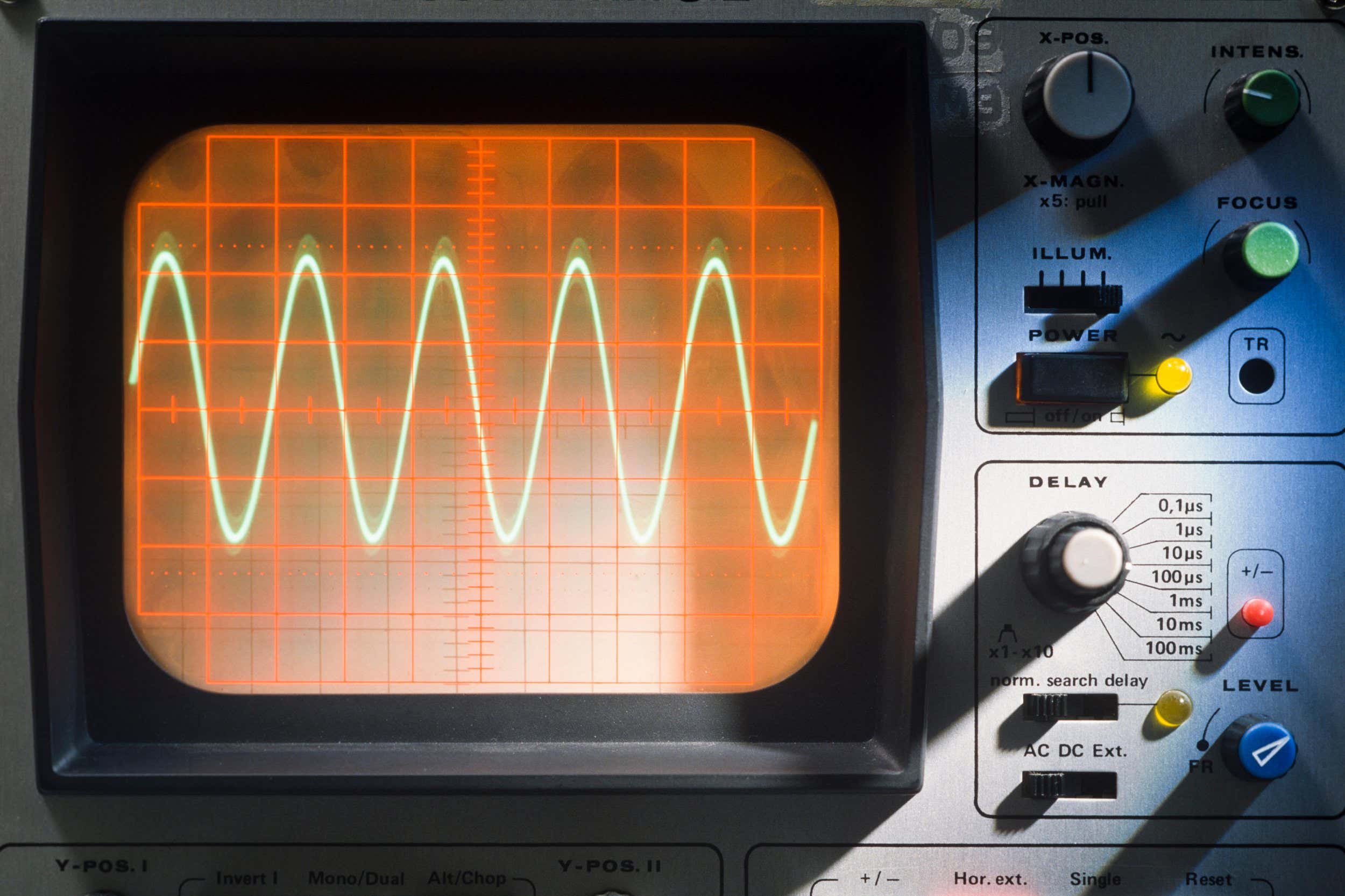
An oscilloscope in an electronic testing lab
Uwe Moser/Alamy
Microwaves seem to be able to spend “imaginary time” inside a material, but this bizarre phenomenon has never been shown to correspond to something real and measurable in the lab – until now.
When a pulse of radiation, such as microwaves or light, travels through a material, the interaction with the material’s atoms can slow it down, creating a time delay. In 2016, a team of researchers calculated that this time delay can be imaginary – crunch the numbers and you get a number of seconds multiplied by the square root of -1, or the imaginary number called i. We don’t encounter such numbers in nature, but Isabella Giovannelli and Steven Anlage at the University of Maryland have found a way to measure them in an experiment anyway.
“It’s sort of like a hidden degree of freedom that people ignored,” says Anlage. “I think what we’ve done is bring it out and give it a physical meaning.”
The researchers sent a microwave pulse through a set of coaxial cables whose ends were connected to form the shape of a ring. They had lots of control over the pulse that entered this ring, and they very precisely collected and analysed the microwave pulse that came out. The team used an oscilloscope and other devices to determine not just how long it lingered in the cables, but also how its other properties, such as frequency, changed.
They found that so-called imaginary time manifests as one tiny physical change. Microwaves are not spending an impossible amount of time in the cables; they are just jiggling through it at a slightly shifted frequency. This is because the energy and intensity of the microwaves are changing as they travel and interact with the cables’ interior, says Konstantin Bliokh at Donostia International Physics Center in Spain, who worked on the 2016 calculation.
Imaginary time delays have been ignored in past experiments because researchers assumed that they are non-physical. Giovannelli says these small frequency shifts are also really difficult to detect. “It was very challenging. Part of the reason we were able to even measure this was because we have some of the best oscilloscopes in the world,” she says.
Franco Nori at RIKEN in Japan, who was also involved in the 2016 work, says the new experiment is “original, thoughtful, carefully executed and important”. He and his colleagues had experimentally tested only the real – non-imaginary – part of the process, so Anlage and Giovannelli’s work completes the picture of how materials can sculpt pulses of radiation.
“Several decades ago, these effects were considered as tiny, but now they play important roles in nanoscience,” says Bliokh. If generalised to include more complex systems, they could be leveraged in some sensing devices, he says. Nori says the results could also help improve devices that use light for storage, as some computer memories do.
The team now plans to explore how the frequency shifts they measured relate to the way information-carrying pulses, such as those used for communication, can get corrupted as they travel through materials.
“It’s like a hammer that we’ve invented, and now we can find nails,” says Anlage.
Topics:
Source link : https://www.newscientist.com/article/2484139-microwaves-seem-to-experience-imaginary-time-and-now-we-know-how/?utm_campaign=RSS%7CNSNS&utm_source=NSNS&utm_medium=RSS&utm_content=home
Author :
Publish date : 2025-06-13 17:00:00
Copyright for syndicated content belongs to the linked Source.